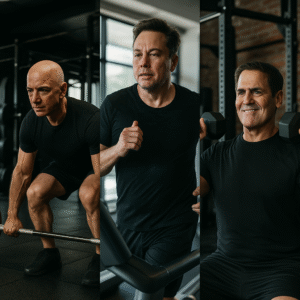How will artificial intelligence revolutionize personal training? What role will virtual reality play in immersive workout experiences? And how can we ensure that these advancements are inclusive and accessible to all?
The Impact of Technology on Fitness Instruction: Where We’re Headed
As we navigate the ever-evolving landscape of fitness instruction, technology continues to play a pivotal role in shaping the future of our workouts. From innovative gadgets to sophisticated digital platforms, the impact of technology is undeniable, revolutionizing how we approach exercise and wellness.
- Personalized Training Experiences: Gone are the days of one-size-fits-all workout routines. With advancements in technology, fitness instruction is becoming increasingly personalized. From AI-powered algorithms that tailor workout plans to individual needs to wearable devices that track every movement. Technology is empowering individuals to achieve their fitness goals with greater precision and efficiency.
- Virtual Fitness Communities: The rise of virtual fitness communities is transforming the way we connect and engage with others on our fitness journey. Through live-streamed classes, interactive training apps, and online forums. Technology is breaking down geographical barriers and creating opportunities for people to support and motivate each other.
- Data-Driven Insights:In the age of big data, fitness instruction is becoming more informed than ever before. With the help of advanced analytics, trainers can now access real-time data on their clients’ performance. Track progress over time, and identify trends to optimize training programs. This data-driven approach not only enhances the effectiveness of workouts. but also empowers individuals to make more informed decisions about their health and wellness.
- Immersive Fitness Experiences: Thanks to technologies like virtual reality (VR) and augmented reality (AR). Fitness instruction is becoming more immersive and engaging than ever before. Imagine stepping into a virtual world where you can run through exotic landscapes, compete in virtual races, or embark on interactive fitness adventures. These immersive experiences not only make workouts more enjoyable. but also open up new possibilities for creativity and exploration in fitness instruction.
- Remote Coaching and Telehealth:The COVID-19 pandemic accelerated the adoption of remote coaching and telehealth services. These trends are likely to continue in the years ahead. With video conferencing platforms and digital communication tools. Trainers can now connect with clients from anywhere in the world. This shift towards remote coaching not only increases accessibility for clients. But also allows trainers to reach a wider audience, and scale their business more effectively.
The Rise of Wearable Tech in Fitness Instruction: Tracking Progress Beyond the Gym
In the fast-paced world of fitness, staying motivated and tracking progress are key factors in achieving long-term success. With the advent of wearable technology, such as fitness trackers and smartwatches. Individuals now have powerful tools at their disposal to monitor their health and fitness goals both inside and outside the gym. In this blog post. We’ll explore the rise of wearable tech in fitness instruction and how it’s transforming the way we track progress beyond traditional workout settings.
 Fitness Trackers: Beyond Step Counting
Fitness Trackers: Beyond Step Counting
Fitness trackers have come a long way from simply counting steps. Today’s devices are equipped with an array of sensors that can monitor everything. From heart rate and sleep quality, to calories burned and exercise intensity. By wearing these devices throughout the day. Users gain valuable insights into their overall health and activity levels. Allowing them to make more informed decisions about their fitness routine and lifestyle.
Real-Time Feedback and Coaching
One of the most powerful features of wearable tech is its ability to provide real-time feedback during workouts. Whether it’s through built-in heart rate monitors, or motion sensors. These devices can offer immediate insights into exercise intensity, form, and performance. This real-time feedback not only helps users optimize their workouts for maximum effectiveness. But also reduces the risk of injury by ensuring proper technique and pacing.
Goal Setting and Progress Tracking
Setting and achieving fitness goals is a cornerstone of any successful training program. Wearable tech makes it easier than ever to track progress towards these goals. Whether it’s reaching a certain number of steps per day, increasing weekly mileage. Users can set personalized goals and track their progress over time using data collected by their wearable devices. This constant feedback loop not only keeps users motivated. This also provides tangible evidence of their hard work and dedication.
Integration with Fitness Apps and Platforms
Many wearable devices seamlessly integrate with popular fitness apps and platforms. Allowing users to consolidate all their health and activity data in one place. From calorie counting and meal tracking to workout planning and social sharing, These apps offer a comprehensive suite of tools to help users stay on track with their fitness goals.
Community and Social Support
In addition to tracking individual progress. Wearable tech also enables users to connect with others and build supportive communities. Whether it’s through social media platforms, online forums, or dedicated fitness communities within apps. Users can share their achievements, seek advice, and find inspiration from like-minded individuals. This sense of camaraderie and accountability can be a powerful motivator. Encouraging users to stay committed to their fitness goals even when the going gets tough.
Conclusion
The fusion of technology and fitness instruction is rapidly shaping the future landscape of the industry. As exemplified by the Results Transformation Center in Rancho Cordova, California. With the integration of innovative technologies like virtual reality workouts, personalized fitness apps, and wearable device. Fitness instruction is becoming more accessible, engaging, and tailored to individual needs. This synergy not only enhances the effectiveness of fitness programs but also expands their reach. Enabling people to achieve their health and wellness goals more efficiently. As we continue to embrace advancements in technology. The trajectory of fitness instruction points towards a future where personalized. Tech-driven approaches play a central role in empowering individuals to lead healthier lifestyles.








